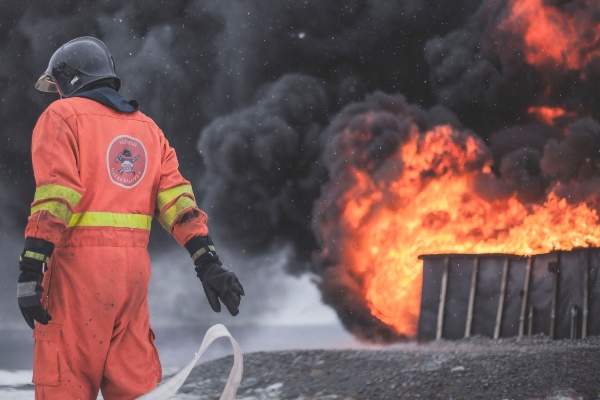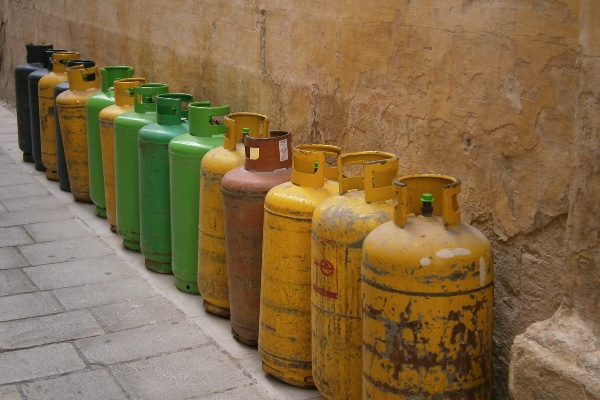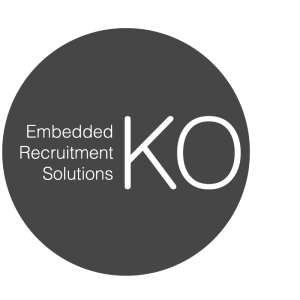If you’re an electronic or embedded systems business, you might be wondering how a piece of health and safety legislation applies to you and the members of your team. But if you work in the safety-critical sector or manufacturer devices that are used to prevent hazardous situations or indicate that they may occur, you may need to learn about the ATEX regulations.
Whilst a lot of the health and safety measures outlined by these regulations only apply to the workplace where equipment is used, the ATEX Directives also affect the materials, design and functionality of equipment such as control components, mobile devices and detection systems. Many of these pieces of equipment will be designed or manufactured by companies within the electronics and embedded systems industry, which is why it is so important to be aware of the standards that apply to them.
What is ATEX?

ATEX is an abbreviation for the ATEX Directives, which are two European Union regulations that have been put in place to ensure that products which are used in explosive environments are safe. They cover the legal responsibilities of individuals who work in these conditions and the requirements of manufacturers who design and produce items that are used in explosive atmospheres.
These regulations provide health and safety standards that must be met before a system or piece of equipment can be used within an environment where an explosion may occur, and can affect the design and development processes of a range of products and software.
Under these regulations, an explosive atmosphere or environment is classified as somewhere that contains flammable gases, mists, vapours or dust that is combustible. If any of these substances were to ignite, an explosion would be very likely.
ATEX Workplace Directive
The ATEX Workplace Directive is also known as ATEX 137 or Directive 99/92/EC and outlines the minimum requirements for ensuring the protection of the people who work in explosive atmospheres. It was implemented by regulations outlined in the Dangerous Substances and Explosive Atmospheres Regulations (DSEAR) health and safety legislation in 2002, which states that measures to reduce the risk of explosions must be taken in workplaces where a potentially explosive atmosphere may occur.
ATEX Equipment Directive
The ATEX Equipment Directive is also known as Directive 94/9/EC or ATEX 95 and applies to the equipment and protective systems that are used within potentially explosive atmospheres. It was brought in under The Equipment and Protective Systems for Use in Potentially Explosive Atmospheres Regulations in 1996.
This directive aims to ensure that universal safety standards are met for all equipment that is going to be used in an explosive environment and certified so that buyers know what is safe to use.
It is this directive that applies to the work that a range of engineers and developers might undertake when working on a project to create equipment or a device that will eventually be used in an explosive atmosphere. Before beginning this work, you must understand the requirements of the ATEX regulations so that you can ensure that whatever you create will function safely in the environment.
ATEX 95 Overview

The key objective of the introduction of ATEX 95, or the ATEX Equipment Directive, was to align all of the technical and legal requirements for equipment and devices that are used in explosive atmospheres. This allows for the free circulation of products on the market, as the regulations ensure that everything produced will meet the same high standards of safety.
Products covered by this directive are:
- Devices or equipment that have potential sources of ignition
- Protective systems that will control the effect of any explosions that do occur
- Safety devices that may be inside or outside an explosive environment, but work to detect potential hazards or minimise them
- Components that form part of a system or piece of equipment used in an explosive atmosphere
The safety measures and specifications outlined in this directive only apply when the equipment or device is going to introduce energy into the hazardous environment. They also apply to devices or equipment that may be outside of the designated hazardous environment but contribute to maintaining the safety of the area.
The ATEX 95 regulations divide equipment into two different groups, which have further subcategories within them.
Group 1 is classified as any equipment that is intended for use in the underground parts of mines or the parts of the surface that are at risk of being affected by heat, damp or combustible dust. Within this group, equipment is divided into:
- Products that are designed to remain functional when an explosive atmosphere is present
- Products that have been designed to de-energise in the event of an explosive atmosphere
Group 2 includes equipment that is used in all other potentially explosive environments. There are three categories within this:
- Equipment designed for areas in which an explosive atmosphere is continuously present or present for long periods, caused by the presence of gases, vapours or mixtures of air and dust
- Equipment designed for areas where gases, vapours and dust are likely to cause an explosive atmosphere
- Equipment designed for areas in which it is unlikely that gases, mists, vapours or air and dust mixtures will cause an explosive atmosphere, or where they will only make the environment explosive for a short time
Any equipment, devices or safety systems that are designed to be used in a potentially explosive atmosphere has to be created with integrated explosion safety in mind. In ATEX 95, the key requirements for equipment are:
- It must prevent the formation of explosive atmospheres within workplaces where other equipment or protective systems may cause or release hazardous substances
Or
- It must prevent the ignition of an explosive atmosphere, whether that is controlling electrical or non-electrical sources of ignition
Equipment or devices may also have been designed in order to minimise the harm caused if an explosion does take place. In all cases, the product must continue to function if its atmosphere becomes explosive or switch off in an explosive atmosphere so as not to ignite.
Embedded systems are frequently used in explosive atmospheres as part of safety devices or measuring devices, both of which are specifically mentioned in the ATEX 95 directive.
Devices or equipment that involves electrical circuits must have fail-safe measures put in place so that they do not cause further problems in the event of an explosion or atmosphere change. These measures will ensure that devices can be restarted or unlocked if they have been stopped in an emergency or if the software is still offline, and also that equipment won’t start up again automatically after an emergency stop or circuit failure.
Any measuring devices, such as those which can detect the appearance of a gas or vapour in the air, are required to function properly in all situations. The data gathered by these devices must be easy to check at all times and any system faults need to be detected and reported immediately, with backup procedures in place to minimise risk.
Finally, if you are designing the software that is used to control a potentially explosive environment, you are required to provide a full risk assessment that accounts for any potential faults in the system and put safety measures in place to try and limit risk as much as possible.
A key feature of ATEX 95 that affects the designers and producers of equipment is that any materials used in the design must not have any properties that might trigger an explosion, even in extreme conditions. Materials must not react with any of the parts of an explosive atmosphere, particularly if the product is used to prevent explosive activity, as damage to the equipment could impact its ability to protect the workplace.
Other features to consider when choosing materials:
- Is the material likely to become less effective over time? Could it weaken or react with something in the environment that will make it less effective?
- Will the material be affected by changing temperatures? Can it withstand the potential heta of an explosion and still function as needed?
- Does the material conduct electricity? Does it need to stop an electrical current from leaving or entering the mechanisms and components inside?
- How strong is the material? Could it withstand the force of a potential explosion and any other debris that might be produced?
- Does the material corrode easily? How long will it last until it starts to wear down and will anything in the environment speed up this process?
Every aspect of a device, system or piece of equipment’s design must be chosen with regards to the technical information available about explosion protection. Studies, specifications and competitor products should be investigated so that you can be sure your design will function properly in all contexts and continue to operate until the end of its lifetime.
Even if you are just designing a component of a machine or system that is going to be used in an explosive environment, you still need to ensure that it will not present a hazard during installation or intended use.
How to Comply With ATEX Regulations
The kind of device, software or equipment that you have designed or produced will affect what steps have to be taken to show ATEX compliance. The tests and checks that will need to be carried out may include:
- EC type-examination: This is a safety examination carried out by a notified body who has been approved to check that Directive standards are being maintained. It is requested by the manufacturer of the product and can be carried out by any company that is authorised for EC-type examinations
- Unit Verification: As well as an EC-type examination, most equipment or devices also need to have a unit verification, where another Notified Body carried out appropriate safety checks on every aspect of the design before approving it for safe use
- CE Marking: CE (European Conformity) marking is the viable proof that a product satisfies all of the requirements of appropriate regulations. It signifies that the equipment is intended for sale in the EEA and is safe to be used
- Product Verification: A similar process to unit verification, where a manufacturer applies for Notified Body to carry out the necessary safety checks for equipment, systems and devices with the EC type-examination certificate
- Production Quality Assurance: This quality check requires the manufacturer to decide on and operate a system that ensures that the production, final inspection and testing of a product is all carried out. This system must be approved by a Notified Body and is subject to ongoing inspection
- Conformity to Type: This compliance process requires the manufacturer to take necessary measures to ensure that they carried out all appropriate checks for the type of product they are making, as described in the EC type-examination certificate and the ATEX Directive
Documentation should be kept of all safety checks and tests that are carried out during the product development cycle, including a list of all the safety standards, like the ATEX regulations, that have been followed.
What is ATEX certification?
If a product or piece of equipment has been given ATEX certification, it means that it has been tested and deemed safe to use in any environment or atmosphere that is hazardous or explosive. Certification is shown by the small ‘Ex’ symbol on the equipment.

Summary
The ATEX Directives are some of the most important health and safety standards for equipment and devices that are designed to be used in explosive environments, and everyone involved in the design and manufacturing process must understand the guidance that should be followed to comply. No matter how much involvement you or your business plays in the creation of equipment or safety systems, having an understanding of the standards in place and what they require is essential in ensuring the safety and longevity of a product.
If you’re looking for a recruitment partner who knows the industry inside-out and can help find people with the right skills and knowledge of these kinds of safety regulations, get in touch and find out more about what our team can do for you.







